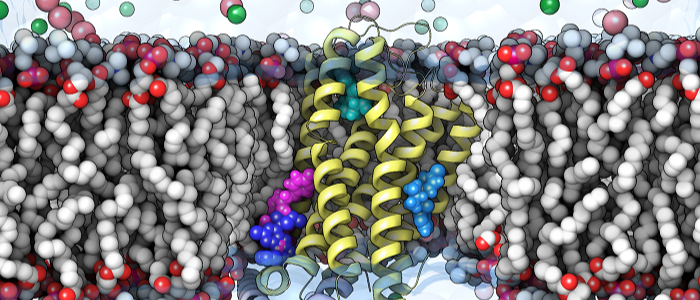Reviewed by Lexie CornerJun 20 2025
Scientists have found new information about certain receptor proteins that could help in developing treatments for metabolic diseases like diabetes, obesity, and inflammation.

Image Credit: University of Glasgow
The study, published in Nature, was led by the University of Glasgow, Queen’s University Belfast, and the University of Pittsburgh. It shows the detailed structures of a receptor protein attached to three different activators. Each activator connects to the protein differently and causes different effects.
The researchers hope this clearer understanding will support the development of better treatments.
They studied a receptor that reacts to short-chain fatty acids. These acids are made when helpful gut bacteria break down fiber in the diet. This process is linked to health benefits in different parts of the body, including the gut and brain. The research used a mix of methods, including biology, chemistry, and cell studies.
The receptor, called FFA2, is found in immune cells, the pancreas, fat cells, and hormone-producing cells. Because of its location, it may play a role in controlling insulin levels, appetite, and fat storage.
To study how FFA2 works, the researchers used three different types of synthetic activators developed by drug companies. They found that each one affected the receptor in a different way.
All three helped boost the activity of short-chain fatty acids, but each did it differently. This allowed the researchers to adjust the effects - to support the pancreas, change how immune cells work, or affect how fat is stored.
We are thrilled with our discoveries and believe this work could be extended to be applied across similar receptor proteins that are currently the molecular targets for 35 % of clinically used medicines. These principles could have enormous reach and possibility in the world of drug discovery.
Graeme Milligan, Professor and Gardiner Chair, Biochemistry, School of Molecular Biosciences, University of Glasgow
Dr. Irina Tikhonova from the School of Pharmacy at Queen’s University Belfast added: “Our molecular dynamics simulations using the Kelvin-2 supercomputer at Queen’s revealed how each compound uniquely changes the receptor's shape, explaining their different signalling profiles. This computational approach was essential for connecting static structures with dynamic biological function.”
Source:
Journal reference:
Zhang, X., et al. (2025) Allosteric modulation and biased signalling at free fatty acid receptor 2. Nature. doi.org/10.1038/s41586-025-09186-6.